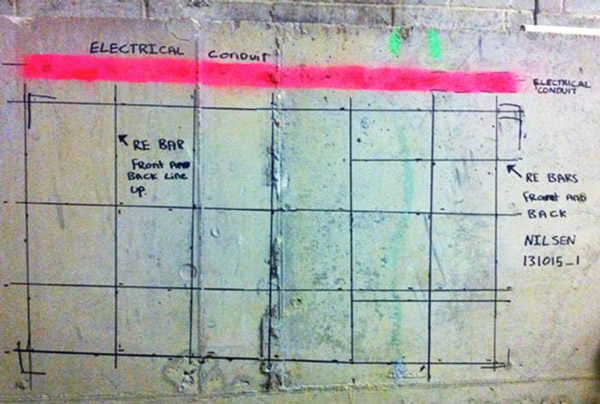The Importance of Specialist Concrete Scanning Services
The Importance of Specialist Concrete Scanning Services
Blog Article
Unveil the Transformative Power of Concrete Scanning in Making The Most Of Performance and Security
Concrete scanning has actually emerged as a critical tool in the building industry, using unmatched benefits in boosting job performance and ensuring safety standards. The transformative power of concrete scanning exists in its ability to offer comprehensive understandings and real-time data, transforming exactly how tasks are intended and implemented.
Value of Concrete Scanning
Making sure the structural integrity and safety and security of building projects begins with the vital action of conducting extensive concrete scanning. Concrete scanning is a non-destructive approach utilized to find and map subsurface aspects within concrete structures.
In addition, concrete scanning aids in maximizing job timelines and budget by staying clear of unforeseen expenses and delays that might emerge due to unpredicted obstructions within the concrete. Inevitably, investing in detailed concrete scanning is a positive strategy that boosts both efficiency and safety and security in construction jobs.
How Concrete Scanning Works
Concrete scanning operates as a vital tool in building tasks by utilizing innovative innovations to discover and map subsurface elements without triggering structural damages. Ground Passing Through Radar (GPR) and Electromagnetic Induction (EMI) are 2 main approaches used in concrete scanning.
During the scanning procedure, the information accumulated is evaluated in real-time, allowing instant identification of prospective threats or barriers underneath the surface. By employing these advanced innovations, concrete scanning dramatically decreases the threat of pricey problems and injuries on construction websites.
Advantages of Concrete Scanning
Utilizing advanced scanning technologies in construction projects supplies a wide range of benefits, improving both effectiveness and security on-site. Among the primary advantages of concrete scanning is the ability to discover and situate embedded items such as rebar, post-tension cords, and channels precisely. By identifying these elements before boring or cutting right into concrete structures, the threat of accidental strikes is substantially decreased, stopping prospective injuries to employees and damage to the framework itself. Concrete scanning assists in planning and creating more effectively, as it supplies specific details regarding the location and deepness of architectural components.

Situation Studies: Concrete Scanning Success

In another case, a construction firm used 3D concrete scanning to analyze the condition old concrete structures in a historic building. The thorough scans supplied valuable insights into the degree of wear and tear and helped prioritize maintenance initiatives efficiently. By proactively attending to areas of issue identified with scanning, the business had the ability to expand the life-span of the framework and make certain occupant safety.
These instance researches highlight the transformative power of concrete scanning in boosting performance, precision, and safety and security visit in construction jobs.
Implementing Concrete Scanning in Projects
Executing advanced scanning technologies during construction tasks has actually come to be increasingly necessary for improving precision and safety and security. By incorporating concrete scanning right into project preparation and execution, building teams can identify potential hazards, such as rebar or post-tension cords, hidden within concrete structures. This aggressive method minimizes the risk of accidents, hold-ups, and pricey rework, ultimately causing a lot more efficient job timelines and budgets.
To apply concrete scanning effectively, job supervisors must work together closely with skilled scanning specialists to determine one of the most appropriate scanning techniques for the details job requirements. Involving scanning experts from the beginning of a job enables the team to produce extensive scanning strategies that address essential areas of worry and ensure extensive information collection.
In addition, integrating concrete scanning right into regular task workflows can improve decision-making procedures, as real-time scan data offers instant understandings right into the problem of concrete structures - Concrete Scanning. This data-driven strategy assists in informed analytic and allows groups to make changes promptly, cultivating a culture of performance and safety and security throughout the project lifecycle

Conclusion
In conclusion, concrete scanning plays a vital role in improving performance Going Here and security in building and construction jobs. By using innovative modern technology to map and spot out underlying frameworks within concrete, this process aids to avoid costly blunders, ensure architectural integrity, and reduce risks on website. With the ability to discover hidden elements and offer precise information, concrete scanning verifies to be a useful tool for optimizing job results and taking full advantage of general success.
Concrete scanning is a non-destructive method used to spot and map subsurface aspects within concrete structures. Additionally, concrete scanning helps in optimizing project timelines and budget by avoiding continue reading this unexpected expenses and hold-ups that may develop due to unforeseen blockages within the concrete. One remarkable case study entails a large restoration job where concrete scanning played an essential function in making certain job success.In another case, a construction business utilized 3D concrete scanning to assess the problem of maturing concrete frameworks in a historical structure. By integrating concrete scanning into project preparation and implementation, construction groups can determine prospective dangers, such as rebar or post-tension cables, hidden within concrete frameworks.
Report this page